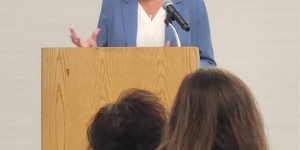Blog Post
Back to School: September is National Campus Safety and Awareness Month
It’s the time for students to head back to school. We are often reluctant to acknowledge and talk about risks and safety at school – especially related to sexual assault and dating violence, but we must.
One of President Obama’s goals for educators nationwide is to “produce a higher percentage of college graduates than any other country in the world by the end of the next decade.” At the U.S. Department of Justice Office on Violence Against Women (OVW) and the U.S. Department of Education, we know that students cannot learn if they don’t feel safe. We need to attend to their basic security needs and place increased focus on primary prevention of violence and victimization in early adolescence – or even earlier.
Unfortunately for young people, sexual harassment and sexual violence are too common on many school campuses. There are victims of all ages, in areas all across the country.
The majority of sexual victimization starts early in life:
- Approximately 80 percent of female victims experienced their first rape before the age of 25 and almost half experienced the first rape before age 18 (30 percent between 11-17 years old and 12 percent at or before the age of 10).
- 28 percent of male victims of rape were first raped when they were 10 years old or younger.
- About 35 percent of women who were raped as minors were also raped as adults compared to 14 percent of women without an early rape history.
Updated April 27, 2017
Component

 U.S. Department
of Justice
U.S. Department
of Justice

